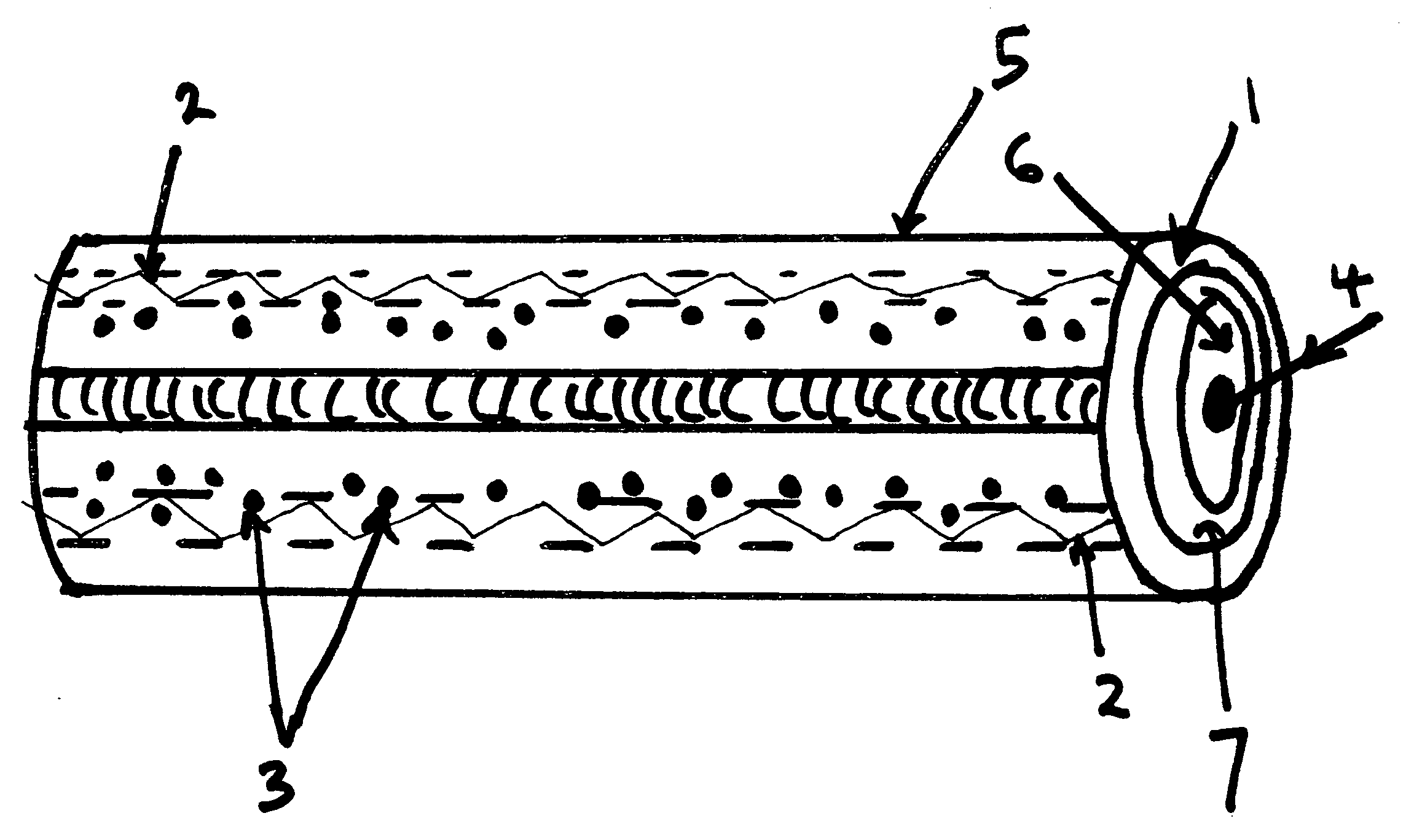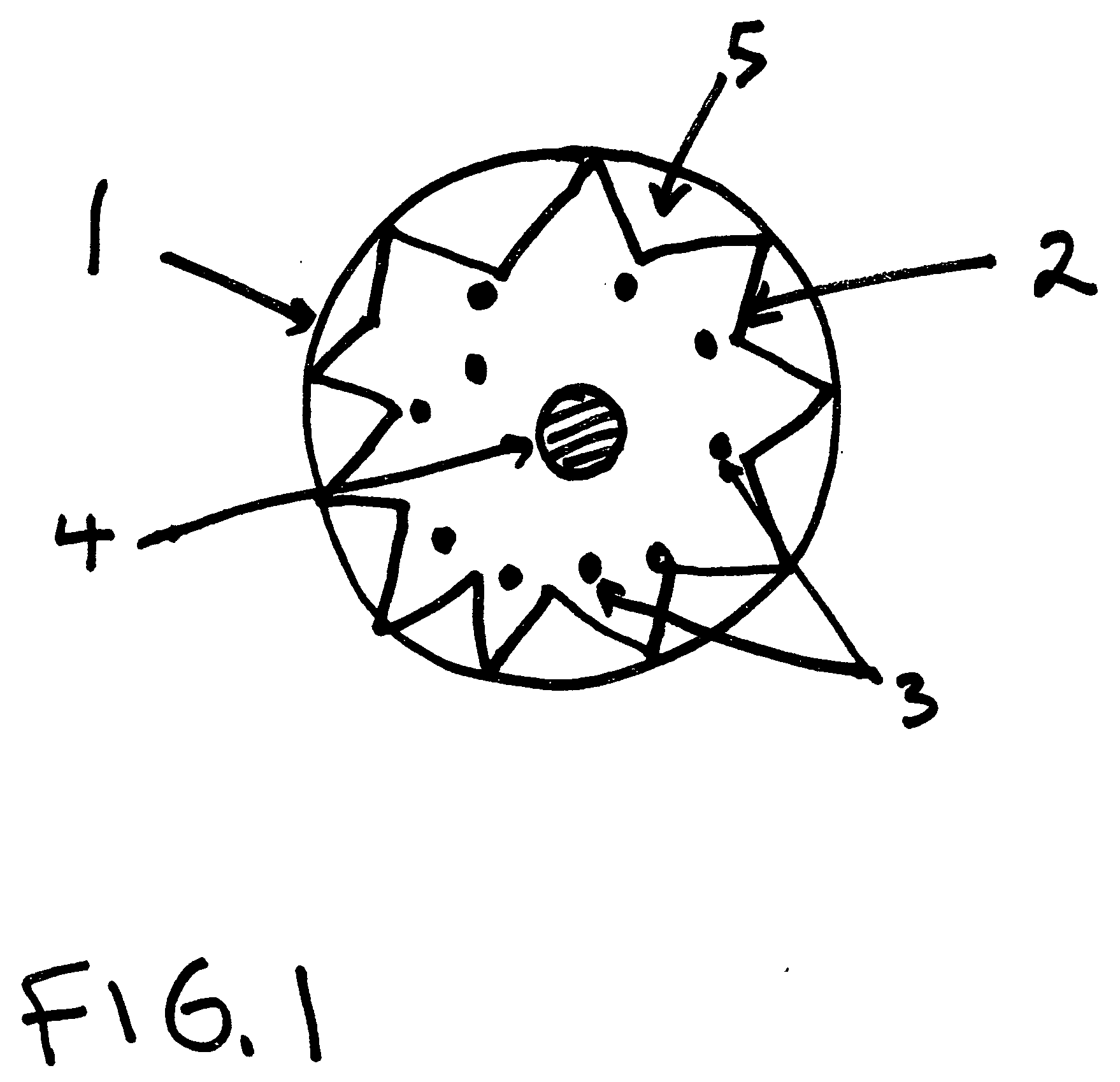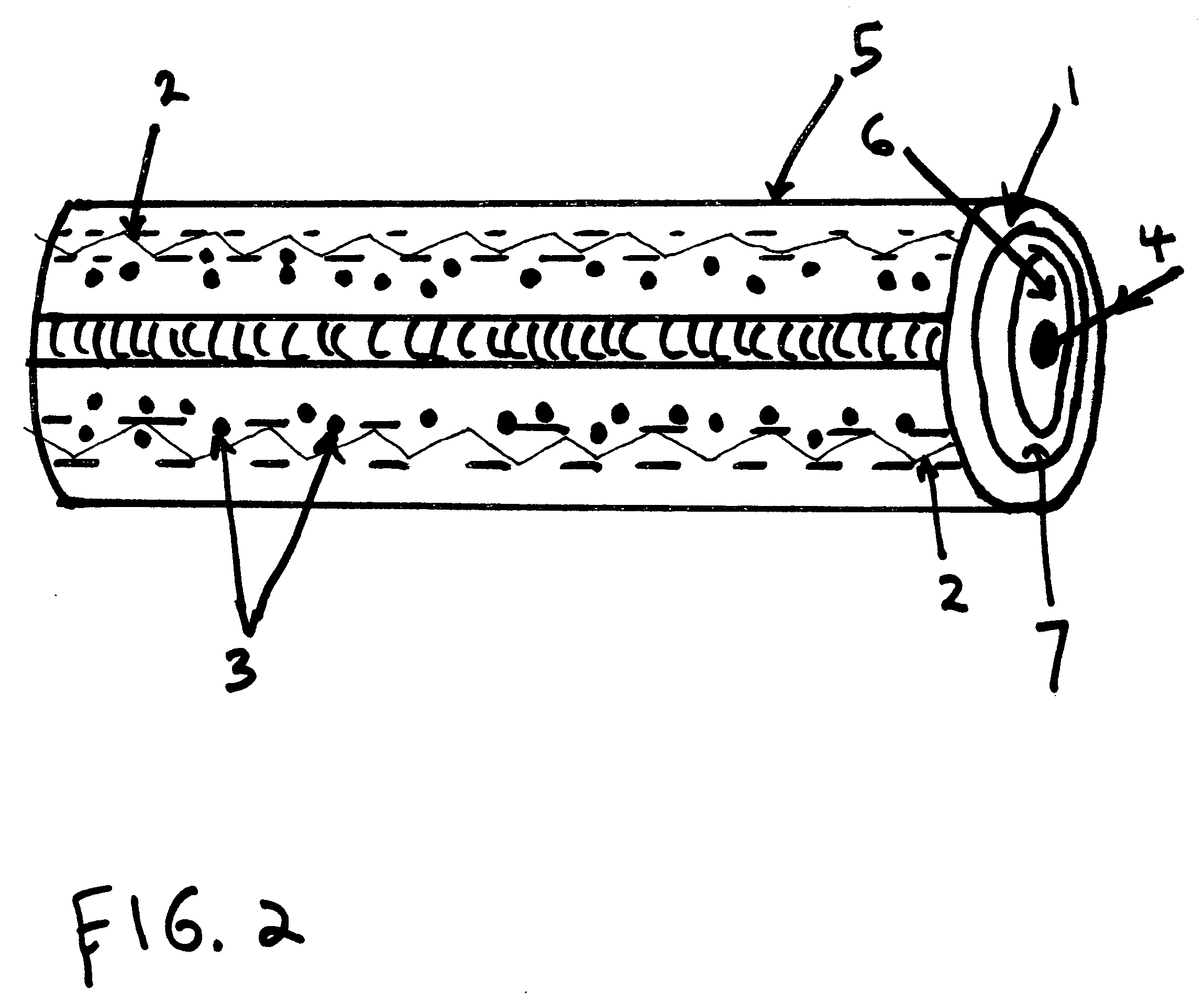Total internal reflection energy/heat source
a technology of energy/heat source and total internal reflection, which is applied in the direction of instruments, optical elements, optical waveguide light guides, etc., can solve the problems of not teaching or suggesting the use of total internal reflection as heat or energy source, prior art does not teach or suggest the reintroduction of impurities or further impurities, and solar technology is limited to its use in daytim
- Summary
- Abstract
- Description
- Claims
- Application Information
AI Technical Summary
Benefits of technology
Problems solved by technology
Method used
Image
Examples
Embodiment Construction
[0018]With reference now to the drawings, and particularly to FIG. 1, there is shown a cross sectional view of a microparticle 1 with electromagnetic radiation or phonon under total internal reflection 2 within microparticle 1. The microparticle 1 is composed of material 5 that allows electromagnetic radiation or phonons to be in total internal reflection 2. The microparticle 1 contains dopants 3 that convert the energy of electromagnetic radiation to vibrational energy or heat. The dopants 3 are immediately at or beneath the lowest point of reflection of the electromagnetic radiation in total internal reflection 2. The heat generated within the microparticle 1 is transferred out of the microparticle 1 by a mechanism 4 that converts heat to electricity or a mechanism that pulls or pushes out the heat.
[0019]With reference now to the drawings, and particularly to FIG. 2, there is shown a cross sectional view of an optical fiber 5 with electromagnetic radiation or phonon under total in...
PUM
 Login to View More
Login to View More Abstract
Description
Claims
Application Information
 Login to View More
Login to View More - R&D
- Intellectual Property
- Life Sciences
- Materials
- Tech Scout
- Unparalleled Data Quality
- Higher Quality Content
- 60% Fewer Hallucinations
Browse by: Latest US Patents, China's latest patents, Technical Efficacy Thesaurus, Application Domain, Technology Topic, Popular Technical Reports.
© 2025 PatSnap. All rights reserved.Legal|Privacy policy|Modern Slavery Act Transparency Statement|Sitemap|About US| Contact US: help@patsnap.com



